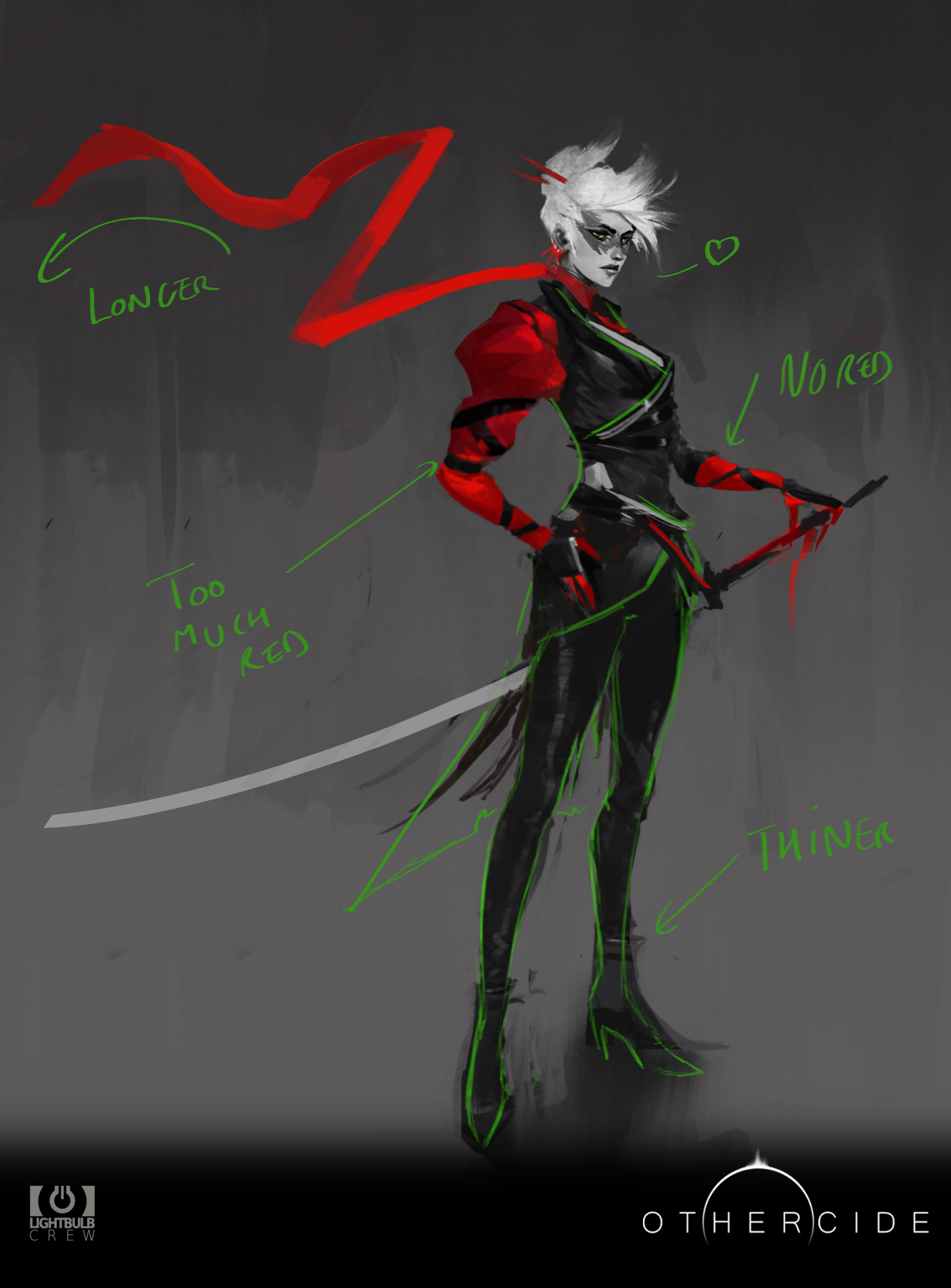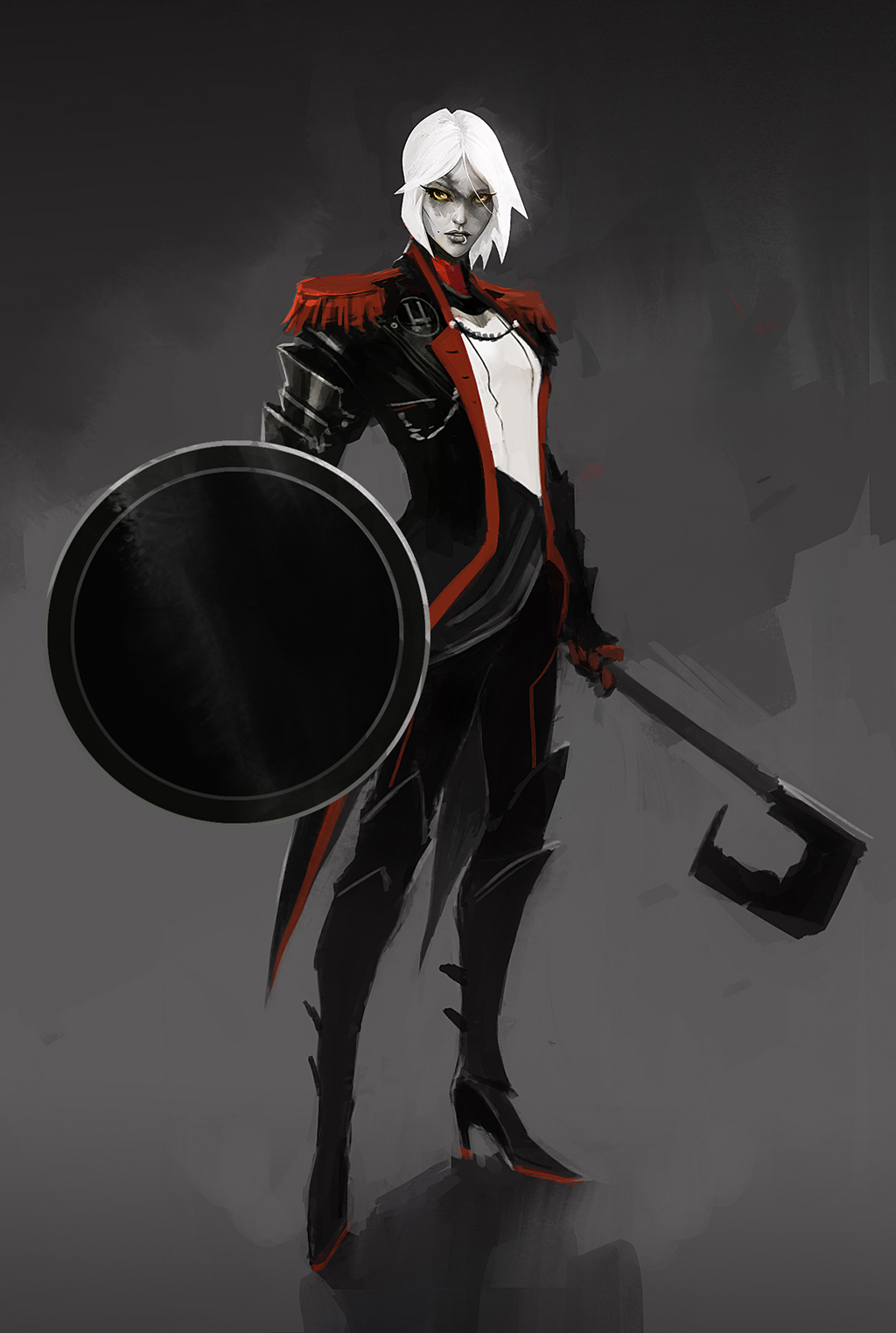
I let the artist develops his own trauma, mindset, enjoyment or fear.
#Othercide blademaster full#
I mean, literally, I sometime leave almost full liberty to the team on some designs or choices.

I think there is no perfect rule to get the best of a team of artists: you need a strong direction to help orientating each choice, and you must listen and jump on each good opportunity when one shows itself. I lead a team of 10ish people, with different specialties and domains, from characters to environments, or even sound-design and UI.

Ha ha, yes, let’s say I am a junior art director! You have a whole team under your management, which emotions do you ask them to transcribe in the game? While you’ve previously worked in the game industry, it’s your first time being the art director for a game. But if you start digging… then there is a complete story that “emerges” from the darkness, in backstage of reality. A bit like in a Dark Souls, you can just pass through the game and enjoy its mechanics, by just “feeling the universe” without taking time to find the subtle elements of the lore. Othercide has what we call an “emergent narration”. I extended the feelings I remembered of this period, pushed them to an extreme level, and extracted what I needed, in order to feed my inner demons and those from my team… The horrible life of the Child, our main villain, is based on a painful moment of my own youth, a disease I had in my 18’s. A lot of the nightmarish creature designs came out of my personal fears and traumas at a specific moment in my life. That means that each creature, character, monster or environment has a small “piece” of our artists’ souls. But sometimes constraints bring a greater good. Of course the rule can’t apply to everything: you must live with budget and constraints. Therefore, even if you get criticized, you can stand your ground and say “yes, but that was my choice”. There is a rule in Art I try to stick to: be honest with what you are creating. That’s why I’m trying to get as much as possible “meaningful” elements in the art direction as possible. Graphics in a video game is the first “direct” link between the player and his emotion. This little insight is just a glimpse of how I am thinking in terms of art direction: for me, a project sails its own path, like a fearless pirate ship, and at one point I’m simply asking the project itself “does this fits your universe or not, Othercide?” Usually, the answer is very quick and expeditious. How do you make graphics be an element of narration?ĭid you know that some people actually dream exclusively in black and white? Personally, I do remember some of my scariest “fiction” dreams to be in black and white. The environment, as the story, is dreamlike: between reality and nightmare.

But, actually, it was not my first thought at all! I am a Mignola’s Hellboy fan ha ha! When I brought the idea of the black/white/red direction, many told me straight: “This? In a tactical? Are you crazy?” Well, yeah.
#Othercide blademaster movie#
The funny point is that everyone associates Othercide to Miller’s Sin City, or at least to the movie that was inspired by his comic. Beksinski, Olivier de Sagazan, Toppi… so much artists out of the usual “video game” industry. After that, the influences came popping out: from the incredible black and white comics of Sean Murphy to the gigantic Blame of Nihei, I took everything that could feed this “Lovecraftian” universe emerging from behind the mirror.

It was the first stone of a long “art direction journey”. I selected the bright red color and scratched a line on one of the characters (this red line will become our heroines “red scarves”), stood back on my chair, watched the image and said “You know what? F*ck it.” three seconds later the image was in black and white, with the scarves as the only red colored part. I was working on the first in game mockups: there were saturated colors everywhere, a true Christmas tree. I even remember the precise moment when I took the decision to bring the black/white/red idea into the art direction.


 0 kommentar(er)
0 kommentar(er)
